Build it and the infrastructure will come – hopefully
The Malinauskas Government plans to make available nearly twice as much outer suburban land for housing as was released in the controversial 2010 Mt Barker rezoning. So why is the planning minister confident the infrastructure errors of that decision won’t be repeated?

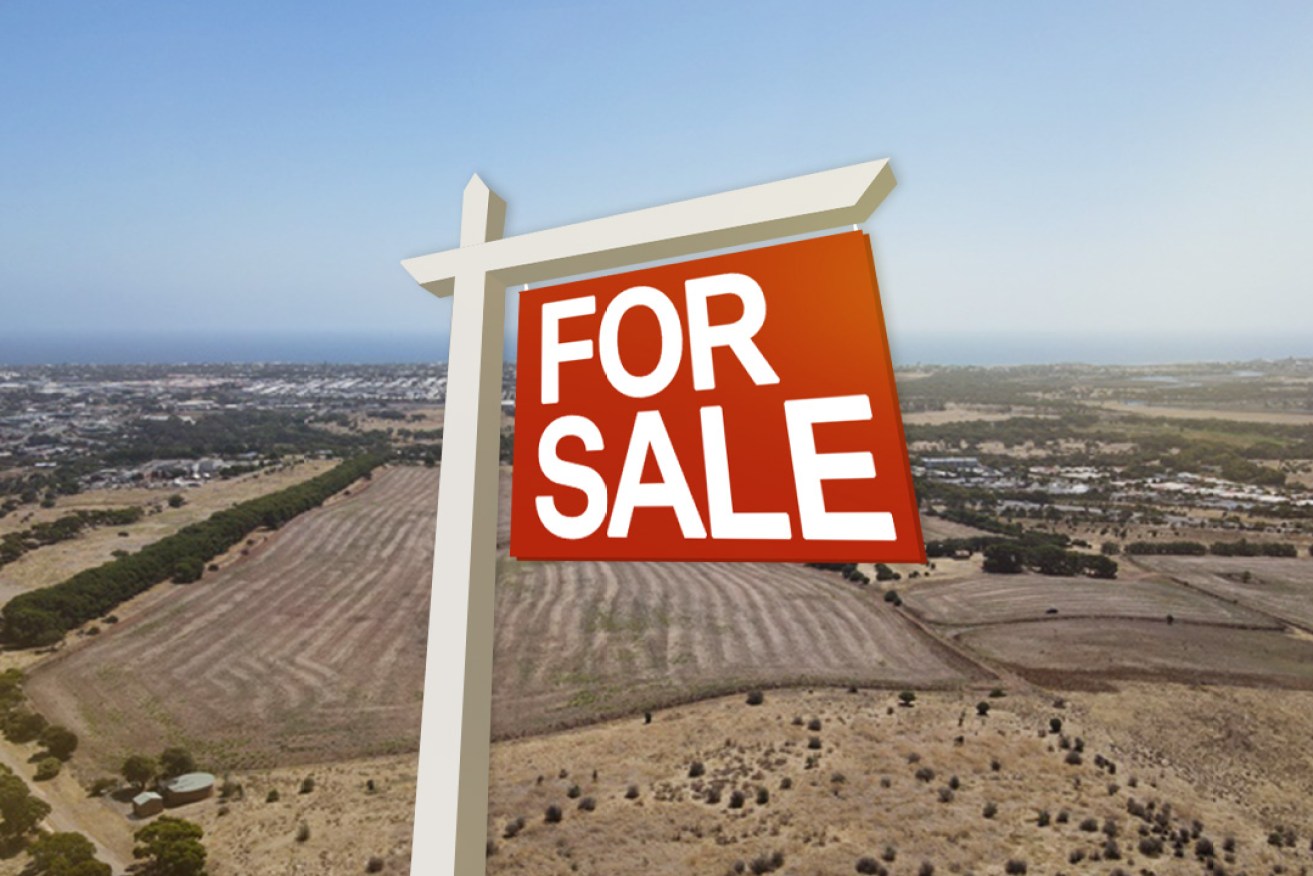
Photo supplied State Government. Image: InDaily
Mt Barker’s infrastructure troubles are like having a “stone in your shoe”, Planning Minister Nick Champion says.
The burgeoning Adelaide Hills city, which earlier this month issued a plea to the Malinauskas Government to address its health, transport and water infrastructure issues, suffers what mayor David Leach describes as a “lack of staging to achieve orderly development” and a “failure to set aside land for public purpose”.
Mt Barker District Council CEO Andrew Stuart describes it to InDaily as “like a hangover from a party”.
“Only in the past two years has there been the start of genuine acknowledgement of infrastructure needs that, until then, were treated in a form of denial,” he said.
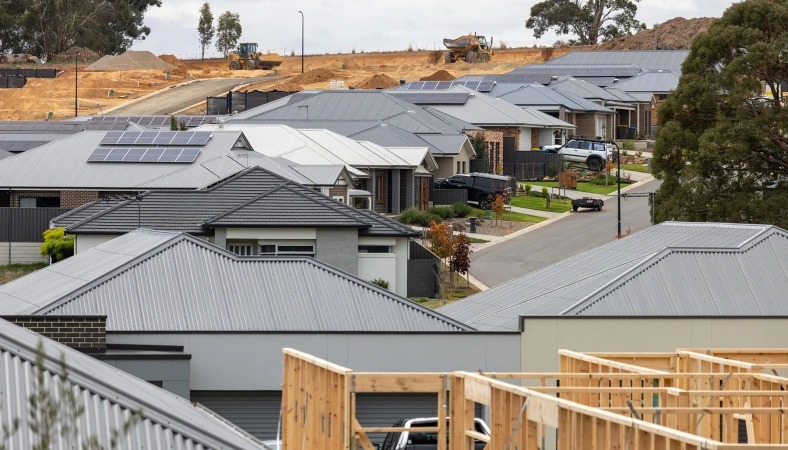
Rapid housing development in Mt Barker. Photo: Tony Lewis/InDaily
It was one of Champion’s Labor predecessors, Paul Holloway, who signed off on the controversial 2010 Mt Barker growth plan to rezone 1300 hectares of rural land for development. He resigned shortly after but defended the decision against criticism.
Now, Champion is leading the Malinauskas Government’s push to rezone 2186 hectares of greenfield land in Adelaide’s outer northern and southern suburbs for the same purpose.
In part two of his wide-ranging interview with InDaily on planning policy, Champion argues the state’s planning authorities are well prepared to avoid the infrastructure staging issues of the past, and reveals why he believes Mt Barker was “actually a success story” as a masterplanned community.
Preparing for 4000 new residents
Earlier this month, Premier Peter Malinauskas kicked off a week of government-housing announcements by flagging future land releases in Hackham, Sellicks Beach, Dry Creek and Concordia.
To date, only Hackham has been rezoned for residential development.
The 235-hectare southern suburbs land parcel went through the code amendment process last year and has been earmarked for a 2000-home master planned community backed by YAS Property & Development, a firm founded by Adelaide businessman Tim Shahin in 2015.
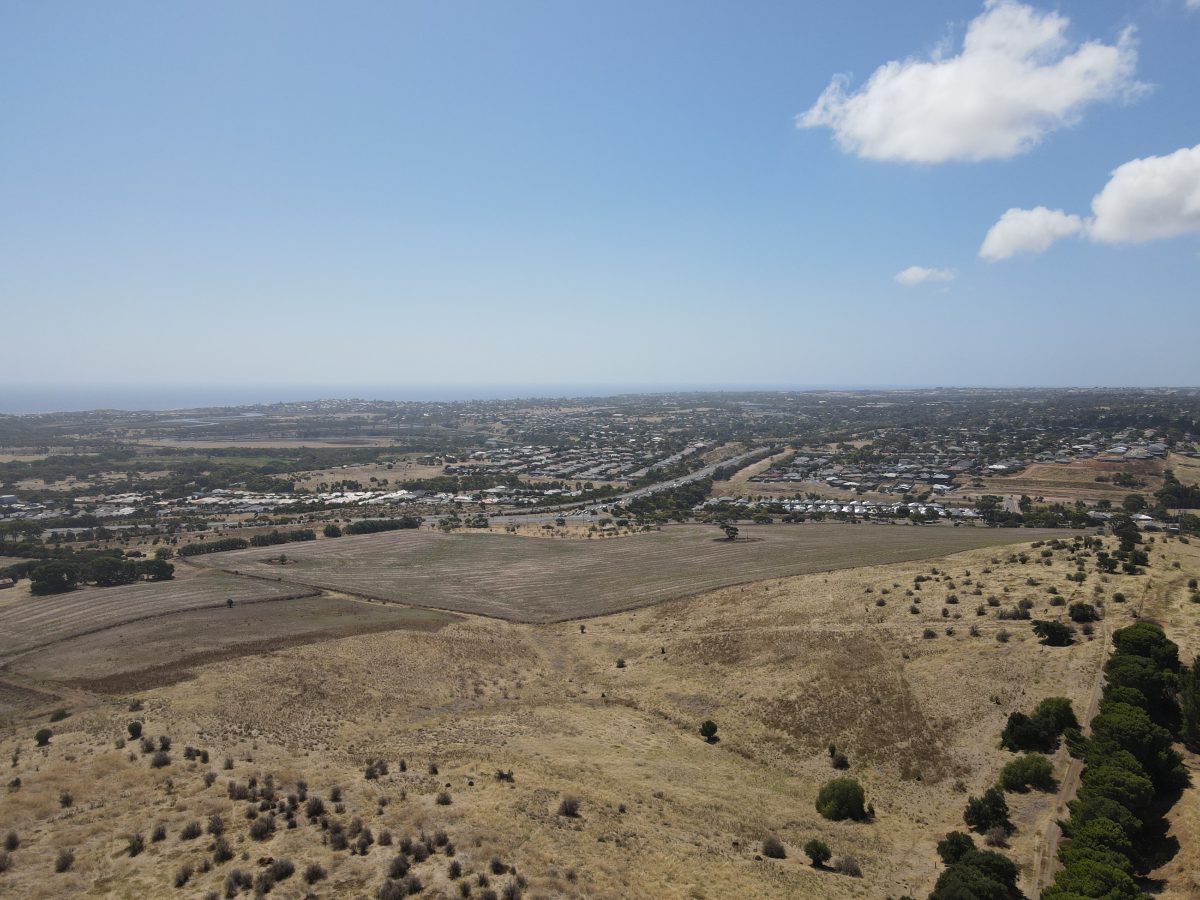
The 235-hectare plot of land in Hackham and Old Noarlunga earmarked for 2000 new homes. The area will likely be renamed “Onkaparinga heights”. Photo: supplied/SA Government
Local residents, with the support of Health Minister and southern suburbs MP Chris Picton, raised a number of familiar concerns about the Hackham proposal, resembling much of what Mt Barker residents said prior to the 2010 growth plan.
Forty-four per cent of the 312 people/groups to submit feedback were worried about “insufficient provision” of social infrastructure, public transport and roads to accommodate new development in Hackham.
Asked what lessons the state government had taken from Mt Barker, Champion said: “It’s not just Mt Barker, I mean I’ve got some similar issues out in Angle Vale in my own electorate.”
“So, I’ve seen the interaction between government and privately held utilities and all of those things play out in real-time.
“And I think the way you avoid it is by having infrastructure deeds in place when you do the code amendment.
“That’s a challenge for all the landholders, and it’s a challenge for government, but that’s the way you do it… so that everybody knows what they’re responsible for.”
‘Have a prepared masterplan’: Tips from Mt Barker
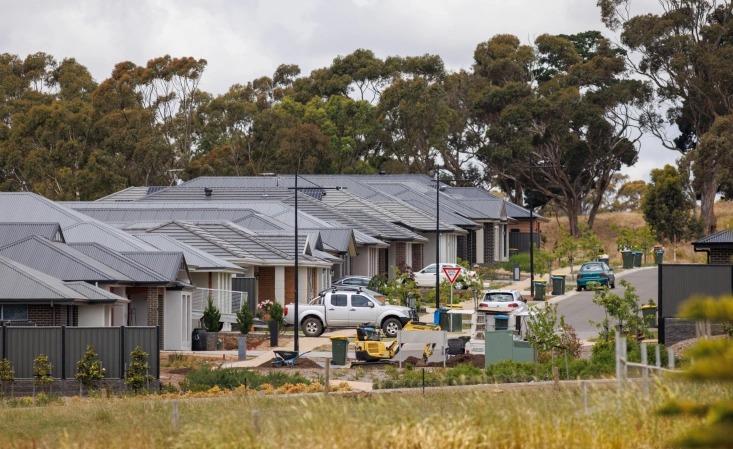
Housing in Mt Barker. Photo: Tony Lewis/InDaily
When the Rann Government gave the green light to the Mt Barker expansion in 2010, ministers Pat Conlon and Jack Snelling promised a huge infrastructure spend, based on a “landmark partnership” with developers.
The council argues that the infrastructure road since then has been far from smooth. Indeed, Holloway’s successor as planning minister John Rau was so disturbed by the lack of infrastructure preparedness that he infamously told developers that the expansion should never have been approved without an infrastructure plan for the area.
In August 2011, he said: “I am not in favour of decoupling rezoning from infrastructure planning. With the benefit of hindsight, this was a problem in the Mt Barker rezoning. There will be no more Mt Barkers on my watch.”
Mt Barker District Council now says only 14 of 38 road projects earmarked for the area in a ministerial deed signed in 2012 have been completed.
Interim infrastructure deeds are in place for transport and stormwater infrastructure for the Hackham development, according to PlanSA, but not for other utilities such as water, sewerage, gas, electricity and communications, all of which will be subject to separate negotiations with utility providers.
However, PlanSA’s summary of consultation on the Hackham code amendments reveals YAS Property & Development actually argued that “negotiation of infrastructure deeds should not delay the Code Amendment as it is believed that the site is already suitably serviced by transport infrastructure”.
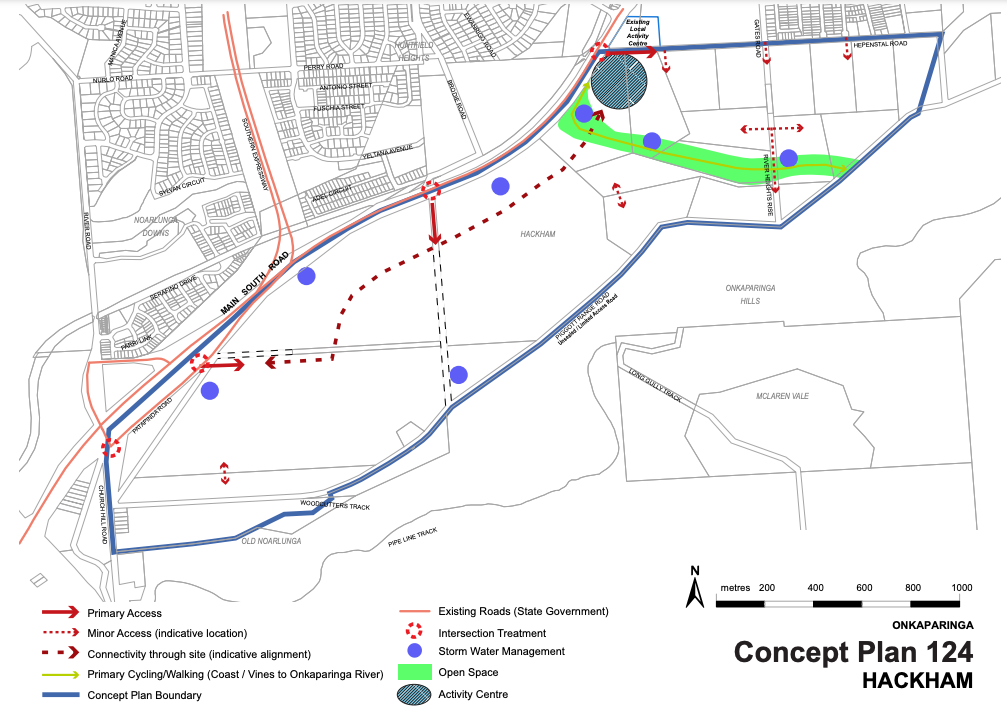
The concept plan for the Hackham masterplanned community. Image: PlanSA
Champion said having interim infrastructure deeds in place between landholders and developers prior to construction will be something the state government is “going to be insisting on”.
He also believes the state government’s newly-established “Infrastructure Planning and Development Unit” – a five-person group tasked with coordinating provision of key utilities in new developments – will help address local concerns about infrastructure.
“It’s why we’ve formed the unit… to look at all the invisible network that lives beneath our feet,” the planning minister said.
“You’ve got to have some idea of the capacity of the electricity market, the capacity of the sewerage system in order to get orderly development.
“NBN is also critical I should add too.
“That’s all the enabling infrastructure that enables a developer to get on and make nice homes and a great community, so it’s a critical piece of work.”
Asked whether the Planning Department already did this work, Champion said it was being done “in part” but infrastructure planning is something “we can get better at”, citing the case of Mt Barker.
“Mt Barker is actually a success story,” Champion said.
“People want to live there, they like it, it’s a pretty vibrant community.
“But why it sticks in our mind is with the infrastructure, there’s this sort of like having a stone in your shoe, there’s this infrastructure issue.
“And I think that’s what we can get better at is looking out, seeing what capacity is there, making sure everybody understands it so we can then address it.”
InDaily asked Mt Barker District Council CEO Andrew Stuart what lessons the state government should learn from his district’s infrastructure problems.
“Have a prepared master plan, particularly taking into account public infrastructure in consultation with local government and developer interests – e.g. recreation, transport, power, sewer, recreation,” he responded.
He said the state government should “provide for a manageable staged release to facilitate orderly development secured by developer deeds”.
“The recent announcement of the establishment of an Infrastructure and Development Unit is a positive step,” Stuart said.
“I would want the Unit to take a whole of government leadership role in future development initiatives and, in addition and of equal importance, take a leading role in delivering solutions to existing state government development sites that have infrastructure problems brought about by failures in government process, e.g. Mt Barker.”
‘Major’ utility upgrades needed for Hackham rezoning
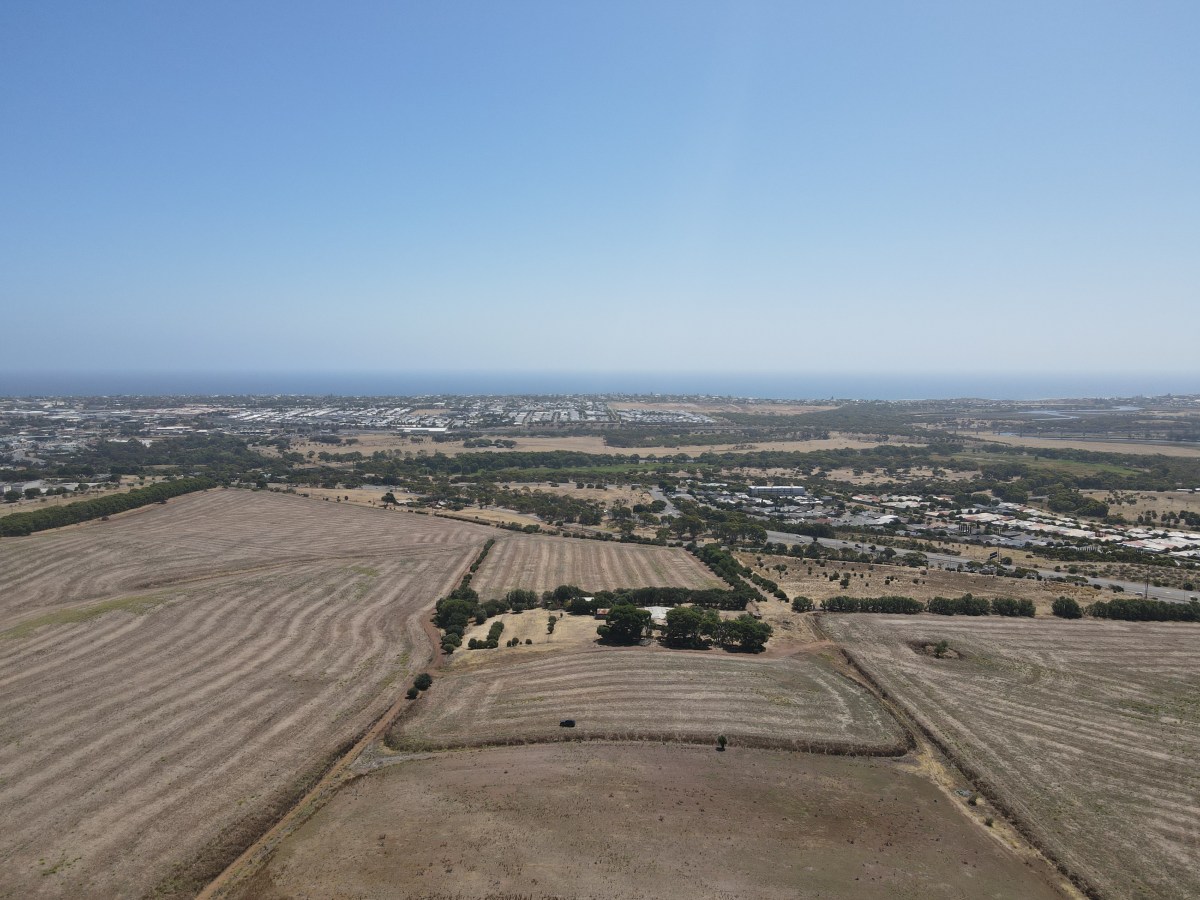
SA Power Networks warns two new electricity feeders will be needed to service 2000 new homes in Hackham. Photo: state govt/supplied
Utility providers have already flagged that significant upgrades will be needed to facilitate 2000 new homes and a projected 4720 new residents in Hackham.
SA Power Networks, the state’s sole electricity distributor, told PlanSA last year the development would demand “a major upgrade” to its Hackham Substation, including two new 11-kilovolt electricity feeders.
It also said there is “minimal spare capacity to the rezoned area” and called for consideration to be given to “the long lead times in meeting any increased load demand” as well as “the requirement for developers to contribute towards augmentation of the upstream electricity network”.
Similarly, SA Water said “water and sewer networks augmentation will likely be required” in Hackham if the rezoning generates additional demand for services.
These upgrades come on top of other social infrastructure demands the Hackham development will bring, including a forecasted demand for 13 to 18 additional hospital beds, 90 aged care beds and 5.2 extra doctors.
The projections, compiled by planning consultancy Holmes Dyer, also tip an additional 392 primary school students and 330 secondary school students to stream into the southern suburbs.
Both Holmes Dyer and the state government are confident there is sufficient capacity in existing local schools to accommodate the new student population.
Champion said he will require all future code amendments – including the state government-backed land releases in Dry Creek, Concordia and Sellicks Beach – to consult with the Education Department on the potential need for new schools.
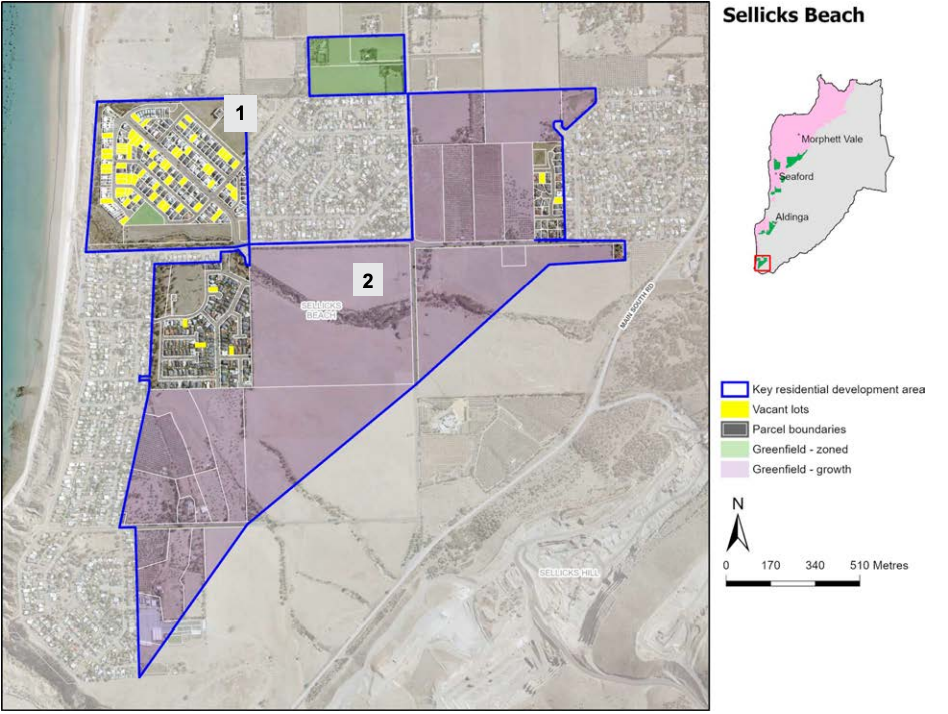
The plot of land in Sellicks Beach earmarked for 1700 new homes. Image: PlanSA
“I think it’s not unreasonable to say, ‘you should talk to the Education Department’,” Champion said.
“Sometimes that’ll be ‘we’ve got plenty of capacity’, and there won’t be a problem.
“But if there is, it might be the Department of Education or… private education wants a site there.
“If they talk to the Department of Education, I think that is a good start.”
Housing industry, developers’ lobby reject infrastructure concerns
Outgoing Urban Development Institute of Australia (UDIA) SA division CEO Pat Gerace argues challenges with infrastructure are “all over Adelaide” and are “disproportionally” attributed to growth areas like Mount Barker.
“It is important to distinguish that changes in an area due to growth are often characterised as infrastructure problems by those who want no change at all, or otherwise expect a new suburb to immediately be like an existing one,” he told InDaily.
“The fact is trees take time to grow and new communities are formed as people develop relationships. We shouldn’t forget that even Adelaide’s oldest and most sought-after suburbs were once new.
“There are challenges with infrastructure all over Adelaide and often growth areas like Mount Barker are disproportionally attributed to some of those types of challenges.
“For example, congestion at the bottom of the south-eastern freeway is consistent with increases in traffic across all of Adelaide and much of it is due to freight.”
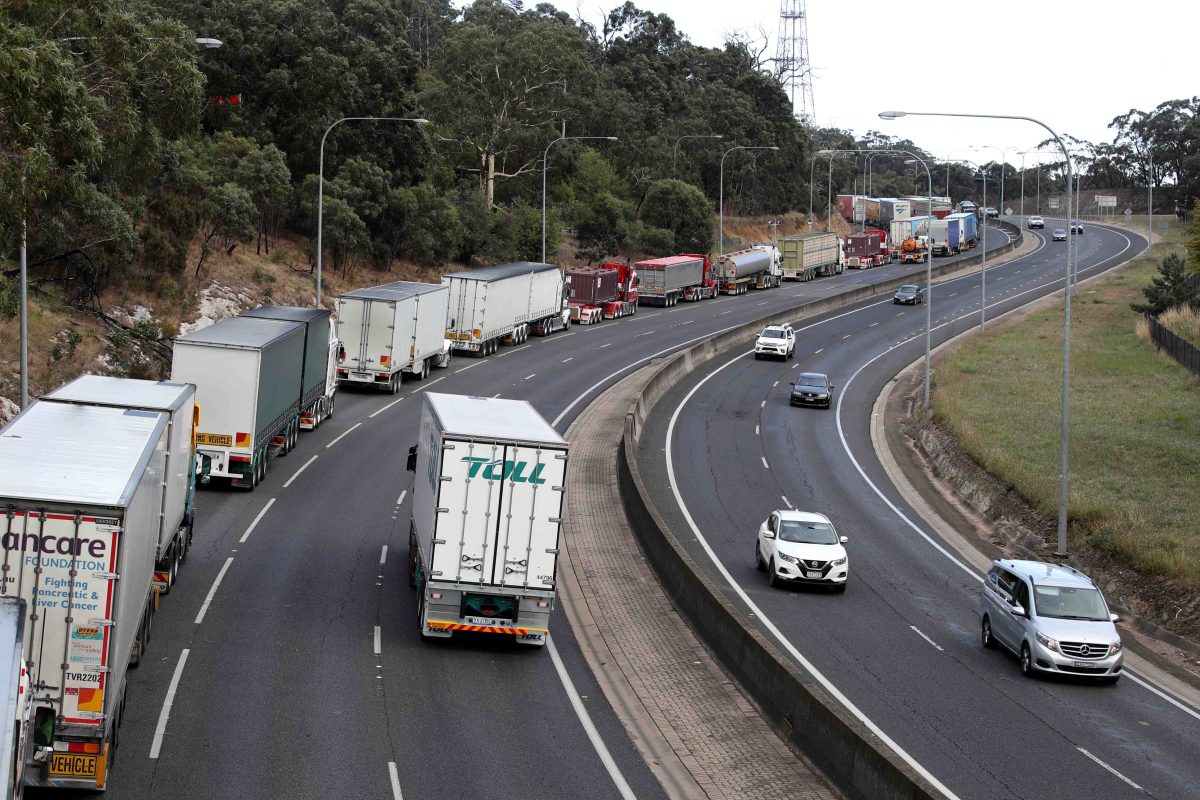
Critics of the Mt Barker growth plan point to traffic problems on the SE Freeway. Photo: AAP/Kelly Barnes
Gerace, who has previously advocated for more strategic infill and master planned communities in South Australia’s planning mix, said the staging of infrastructure development was “perhaps the more pertinent question about infrastructure in Mt Barker”.
“There are already very detailed plans and works underway for much infrastructure in the area, but when councils and government wait for all of the infrastructure in growth areas to be funded by developers, it’s obvious that the infrastructure will only be provided as or after development occurs,” he said.
“With funding constraints and multiple developers in an area, the solution Is not to limit growth area development, instead we need investment from local government and state governments to provide upfront funding mechanisms and for it to be repaid as development occurs.”
Housing Industry Association of South Australia executive director Stephen Knight expressed a similar sentiment.
“Mount Barker has some issues but all in all has been a great development with 1000s of new homes and families thriving with schools shops and community facilities being provided to meet growing demand,” Knight said.
“Transport infrastructure has struggled to keep up, but over time, with more people taking the opportunity to work from home and others choosing to work locally, with government actively looking for solutions, the current issues will improve.
“That’s not to say we can’t do better with the new land releases.”
Knight also welcomed the introduction of the state government’s new five-person Infrastructure and Planning Unit as a “great first step towards a coordinated approaching during the planning process”.
“Recent new masterplanned developments at Riverlea, Freeling and Two Wells for example have shown that high-quality developments can meet and better community expectations and become highly desirable and affordable places to live,” Knight said.
“Hackham and Sellicks Beach will go a long way to filling the gap down south where affordable land shortages have been with up for decades, though over the long term bringing more land to the market will be a challenge.”
Local Government Association of South Australia president Dean Johnson said councils understand greenfield developments “will continue to have a role in expanding Greater Adelaide’s housing supply over the coming decade”.
But he also said the state government would need to provide sufficient investment to support infrastructure needs.
“The aim should be to create well-planned neighbourhoods that provide the necessary facilities a community needs to thrive, along with access to local employment opportunities,” Johnson said.
“To achieve this, local councils need State Government support through investment in the necessary physical and social infrastructure – such as public transport, schools, hospitals, roads, and reliable access to basic utilities like electricity and water – as this enables new communities to be sustainable, integrated, and liveable as they grow.”




